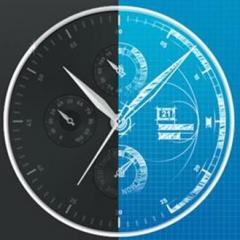Shout-out for help Citizen 8110A-BALANCE PROBLEM
-
Recently Browsing
- No registered users viewing this page.
-
Topics
-
Posts
-
Hi all, Might a posit a theory and people can chime in and tell me if I'm barking up the wrong sycamore: If a mainspring is a bit coned and returned to its barrel for reuse, is it less likely to slip when the spring gets to fully wound? For a bit of background: Slava 2427, barrel walls greased with 8217, six dots evenly spaced around each of the barrel walls, then smeared/ spread along the wall before popping the springs in.
-
By nickelsilver · Posted
What kind of screwplate are you using? The old Martin ones commonly came in B and L variants. The thread pitch is slightly different between the two, and the full thread diameters tend to be a little off from metric nominal, but the B plates are close enough to metric that they work most of the time. The numbering follows (pretty much) the numbering for stems- at least how stems threads are commonly called out. So a "tap 12" would be 0.70mm. (I can only guess the "tap" size for stems comes from these old plates) These old plates tend to cut some and also form the thread by displacing metal. I think in part because they are low-tech, and also generally a bit worn. So it's good to start quite undersize with your initial diameter, and work up to something that gives a full thread form. There are variances plate to plate too, most likely a combination of manufacturing differences and wear. I haven't tried any modern screw plates, I think they are of questionable origin, and even if marked in metric, probably merit some experimentation like the antique ones to find a good starting diameter. -
Exactly. As Richard says, all good - I helped you by splitting your comment made on an old topic into a new topic of your own in order to help with clarity 🙂 Welcome to the forum by the way 👍
-
By RichardHarris123 · Posted
Mark, means he has made this a separate post, he has split it from the old post. You don't need to start a new thread now. -
By RichardHarris123 · Posted
No, my first time. I've watched the video, lets hope it looks as good as yours.
-






Recommended Posts